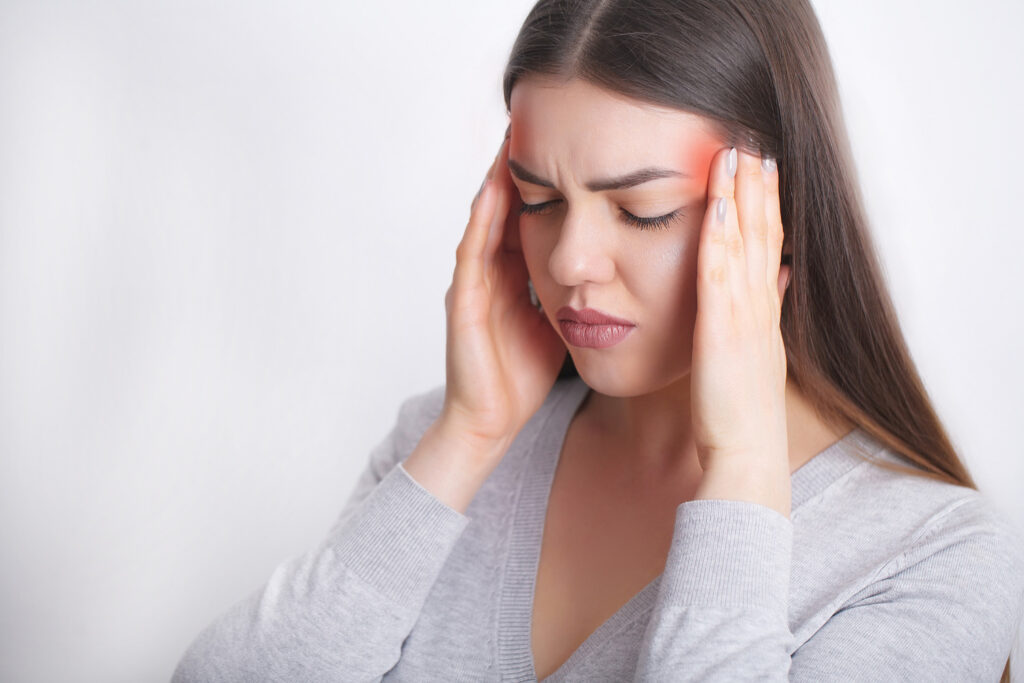Stress, a universal experience in our fast-paced modern world, is a response the body generates in reaction to challenging circumstances, perceived threats, or high-pressure situations. Common triggers can range from work-related pressures and financial concerns to relationship and health problems.
Despite its ubiquity, managing stress effectively is a task many grapple with. This article aims to equip you with practical and actionable strategies to navigate and control the stress in your life, assisting you toward a calmer, more balanced existence.
Understanding Stress

Stress, in the biological sense, is the body’s way of responding to any demand or threat. It is the body’s protective method, designed to help you stay focused, energetic, and alert in emergencies. This response is known as the “fight-or-flight” response, and its purpose is survival.
Acute vs Chronic Stress
There are two primary types of stress: acute and chronic. Acute stress is a natural reaction to a singular stressful event or situation. It’s the type of stress you experience when you narrowly avoid a car accident or when you have to give a big presentation at work. This stress is immediate but temporary, typically subsiding once the situation has passed.
Chronic stress, however, is prolonged stress that can last weeks, months, or even years. It can stem from ongoing pressures such as job insecurity, an unhappy marriage, or persistent financial worries.
Unlike acute stress, chronic stress does not dissipate after the stressful event has passed. Instead, it remains, gradually taking its toll on your physical health and emotional well-being. It’s essential for your overall health to recognise and manage chronic stress.
The Impact of Stress on Physical and Mental Health

Stress, mainly when it is chronic, can have detrimental effects on both physical and mental health. Physically, stress can manifest in numerous ways, including headaches, fatigue, sleep disturbances, digestive issues, and even alterations in your immune system functioning, making you more susceptible to infections and disease.
Over time, chronic stress can contribute to severe health conditions like heart disease, high blood pressure, diabetes, and other illnesses.
Mentally, stress can lead to emotional distress, anxiety, depression, and cognitive difficulties such as problems with concentration or memory. It can make individuals more irritable and restless, negatively impacting their overall quality of life.
Identifying Your Stress Triggers
Successful stress management begins with identifying the sources of stress in your life. These stress triggers, or stressors, are events or conditions in your surroundings that may trigger the stress response.
Everyone responds to stressors differently, meaning what might be stressful for one person may not be stressful for another. Stressors can be minor hassles, significant lifestyle changes, or anything. Identifying your stressors is crucial as it provides the first step towards managing them effectively.
Stress triggers can be external, linked to your environment, social situation, or specific events. Examples include moving house, changing jobs, going through a divorce, or dealing with a death in the family. They can also be internal, tied to emotional or psychological states, such as constant worry about meeting expectations, feelings of uncertainty, or unrealistic perceptions of things or events.
To identify your stress triggers, keep a stress diary for a few weeks. Note down what caused stress, how you felt, both physically and emotionally, how you acted in response, and what you did to make yourself feel better. Over time, you will begin to see patterns and common themes.
Tips for Tracking and Identifying Stress Triggers
A systematic and conscious approach can be invaluable when tracking and identifying your stress triggers. Here are some tips to aid you in this process:
- Maintain a Stress Journal: Keeping a record of stressful events and your reactions to them can help you discern patterns and identify your stress triggers. Document the date, time, location, people involved, and your emotional and physical responses. Additionally, jot down what you were doing, what precipitated the stress, and how you responded.
- Reflect on Each Situation: Take some time at the end of each day to reflect on the stressors you encountered. Try to identify patterns or recurring themes. This will help you better understand the situations, environments, or people that trigger stress.
- Understand Your Emotional Responses: Pay attention to your emotional responses to each stressor. Do certain events make you feel anxious, irritated, or depressed? Are there stressors that make you feel overwhelmed or out of control? Understanding your emotional reactions can provide insights into what causes you stress.
- Recognize Physical Symptoms: Stress can often present itself through physical symptoms like headaches, body aches, fatigue, insomnia, or changes in appetite. Keeping track of these symptoms can help you identify when you’re experiencing stress, even if you’re not consciously aware of the stressor.
- Seek Feedback: Sometimes, others may notice changes in our behaviour before we do. Don’t hesitate to ask trusted friends, family members, or colleagues if they’ve noticed any patterns in your behaviour or mood that may be linked to specific situations or times.
By implementing these tips, you’ll be better equipped to identify and manage your stress triggers, paving the way towards improved mental and physical well-being.
Physical Activities to Deal with Stress
Exercise is an excellent way to combat stress. Not only does physical activity help to divert your mind away from the issues causing you stress, but it also promotes the production of endorphins, your body’s natural mood lifters.
Types of Exercises to Relieve Stress
- Aerobic Exercise: Aerobic exercises like running, swimming, cycling, or simply going for a brisk walk can help reduce stress. They enhance your breathing and heart rate, which can help to distract your mind from stressors and induce a calming effect post-workout.
- Yoga: Yoga is a mind-body practice that combines physical poses, controlled breathing, and meditation. It can help reduce stress, lower blood pressure, and improve heart function. Not only does it help in reducing immediate feelings of stress, but it also boosts resilience against future stress.
- Pilates: Pilates can help reduce stress by promoting relaxation and well-being. Focusing on controlled movements and breathwork can distract your attention from stressors and create a calming effect.
- Tai Chi: This Chinese martial art embraces mind, body, and spirit. Tai Chi utilizes slow, flowing movements and deep breathing techniques to cultivate a state of relaxation and calm.
- Strength Training: Lifting weights or strength training can be a powerful stress reliever. It can help boost your mood and be a positive distraction from stressors.
Benefits of Exercise for Stress Relief
Engaging in regular physical activity brings a host of benefits, especially for those looking to manage or mitigate stress. Here are some key benefits:
- Mood Enhancement: Exercise triggers the release of endorphins, often called ‘feel-good’ hormones, which act as natural painkillers and mood elevators.
- Improved Sleep: Regular physical activity can help regulate your sleep patterns, which can be disrupted by chronic stress.
- Increased Self-Esteem: Regular exercise can boost your confidence and self-esteem, helping you feel better about yourself, which can, in turn, reduce feelings of stress.
- Distraction: Physical activity distracts from stressful situations, providing a natural shield against daily stressors.
Remember, the most important thing is to find a physical activity you enjoy, which increases the likelihood you’ll make it a regular part of your life.
It’s always wise to consult with a healthcare provider before starting a new exercise routine, especially if you have any chronic health conditions or have been sedentary for an extended period. For more profound information, you can check out this article: Exercise and stress: Get moving to manage stress.
Yoga and Mindfulness-based Stress Reduction
Yoga and mindfulness-based stress reduction (MBSR) are two effective techniques that significantly decrease stress levels.
Yoga is a holistic practice that integrates physical, mental, and spiritual elements. It incorporates a series of postures and controlled breathing exercises designed to enhance flexibility, strength, and balance while promoting tranquillity and mindfulness. Yoga has been shown to reduce stress anxiety and improve mood, making it an excellent tool in your stress management toolkit.
Mindfulness-based stress reduction, on the other hand, is a therapeutic intervention that involves mindfulness meditation and yoga. Designed to assist people with stress, anxiety, depression, and pain, MBSR teaches individuals how to utilize mindfulness as a means to deal with life’s difficulties.
By focusing on the present moment, without judgement or distraction, one is able to observe one’s thoughts and feelings from a distance rather than getting caught up in them. This practice can lead to significant improvements in stress levels, mood disorders, and quality of life.
These two practices—yoga and MBSR—are not mutually exclusive. In fact, they complement each other. Yoga can be seen as a form of moving meditation that aids in developing mindfulness, while MBSR often involves the use of yoga postures to build body awareness as a part of developing mindfulness. Together, they create a formidable package for stress reduction.
Mental and Emotional Strategies to Manage Stress
Mindfulness and meditation techniques are powerful mental and emotional strategies for managing stress. These practices can help you maintain a moment-by-moment awareness of your thoughts, feelings, and surroundings, promoting a sense of calm and balance.
Mindfulness is about being fully present in the moment, acknowledging and accepting your feelings, thoughts, and bodily sensations. This acceptance can help you respond to stressful situations with more clarity rather than reacting impulsively. Various mindfulness exercises, such as mindful breathing or mindful eating, can be incorporated into your daily routine, cultivating a greater sense of peace and tranquillity.
Meditation, a deeper form of mindfulness, is a practice of concentrated focus that can help you relax, reduce stress, and achieve mental clarity. There are various types of meditation techniques, such as:
- Guided Meditation: In this technique, your focus is driven by a narrator or teacher. You may be asked to visualize a peaceful place or situation promoting relaxation.
- Mindfulness Meditation: This technique is based on being mindfully aware of the feelings, thoughts, and sensations that arise in the present moment.
- Transcendental Meditation: This involves silently repeating a mantra to help you focus and quiet your mind.
- Loving-Kindness Meditation: This type of meditation involves focusing on developing feelings of compassion and love for yourself and others.
Regular practice of mindfulness and meditation can significantly decrease stress levels, improve mental clarity, and foster a healthier emotional state. It’s important to create a peaceful environment when practising these techniques and remember that patience and consistency are key. It may take some time to feel comfortable with these practices and notice their benefits, but the effort is well worth it.
Cognitive-Behavioral Strategies to Reframe Stress
Cognitive-behavioural strategies offer another effective approach to managing and reframing stress. These techniques involve identifying negative thought patterns and reframing them into positive, constructive ones. This process helps to alter your perception of stressful situations, thereby reducing the intensity of your stress response.
One common cognitive-behavioural technique is Cognitive Restructuring, which encourages the identification of negative or distortive thoughts that often contribute to stress levels. Once these thoughts have been identified, the goal is to challenge and restructure them into more positive or realistic ones. This can significantly reduce feelings of stress and anxiety, promoting a healthier emotional state.
Problem-solving therapy is another technique that can be helpful in managing stress. It involves identifying a problem, brainstorming possible solutions, evaluating and comparing those solutions, choosing the best one, and implementing it. This technique enables you to address stress directly and actively work towards reducing its cause.
The Power of Positive Thinking and Attitude Adjustments
Maintaining a positive mindset is another powerful strategy for managing stress. Positive thinking does not mean ignoring life’s problems. Instead, it involves approaching these difficulties with a more optimistic and productive mindset.
A positive attitude allows you to perceive stress as a challenge rather than a threat and problems as opportunities for growth, learning, and improvement. This perspective can make stressful situations seem less overwhelming and more manageable.
One way to cultivate a positive mindset is through Affirmations, positive statements that can help you challenge and overcome self-sabotaging and negative thoughts. Repeating these affirmations daily can help you maintain a positive attitude, even during stressful times.
Gratitude Practice is another strategy to foster positive thinking. By focusing on the good things in your life, you can shift your attention away from negative thoughts that may contribute to stress.
Remember, adjusting your attitude and becoming a positive thinker takes time and practice. But the more you practice positive thinking, the more resilient you’ll become in the face of stress.
Relaxation Techniques for Immediate Relief
Relaxation techniques such as breathing exercises and guided imagery can provide immediate relief from stress.
Breathing Exercises:

Deep breathing can help to activate your body’s relaxation response, leading to a state of restfulness. There are several types of breathing exercises you can try, like diaphragmatic breathing, rhythmic breathing, or 4-7-8 breathing. These exercises involve slowly taking a deep breath, holding that breath for a few moments, and then slowly exhaling. This action helps to regulate your heartbeat and can have a calming effect on your mind.
Guided Imagery:

This is a type of mindfulness technique that involves visualizing a peaceful, safe, or comforting scenario or environment. You can use an app or a video to guide you through the process, or you can use your imagination. This technique is beneficial in evoking relaxation and reducing stress.
Guided imagery can help you disconnect from the stress of the moment and instead focus on positive and peaceful images to relax your mind and body.
These relaxation techniques are highly effective in providing immediate relief from stress. However, like any other skill, they require practice to be most effective. Consider integrating these techniques into your daily routine for better stress management.
Progressive Muscle Relaxation
Another effective relaxation technique is Progressive Muscle Relaxation (PMR). This method involves tensing, then relaxing, each muscle group in your body, starting from your toes and working your way up to your head.
By consciously intensifying and then releasing your muscles, you can achieve a deep state of physical relaxation, which can, in turn, help reduce stress and anxiety. Though it may seem challenging at first, with regular practice, you’ll be able to detect better and control the tension in your muscles, contributing to an overall sense of calm and well-being.
Aromatherapy and Other Sensory Methods
Sensory-based techniques like Aromatherapy also offer significant stress-relieving benefits. Aromatherapy involves using aromatic essential oils to stimulate your sense of smell, which can influence your mood and promote relaxation. Some popular essential oils used for stress relief include lavender, chamomile, and bergamot.
Aside from Aromatherapy, other sensory methods, such as listening to calming music, enjoying a warm bath, or drinking a hot cup of herbal tea, can also stimulate your senses and create a soothing environment, helping you to unwind and relieve stress. It’s essential to remember that the effectiveness of these techniques can vary from person to person, so it’s best to experiment and find out what works best for you.
Long-Term Stress Management Strategies
Long-term stress management requires a comprehensive approach that addresses not only immediate stressors but also your overall lifestyle and habits.
Creating a Personal Stress Management Plan
A personal stress management plan is a structured approach designed to help you identify your stressors and establish strategies to handle them effectively. This plan involves detailing your stressors, understanding how you react to them, and developing coping strategies. Creating a personal stress management plan promotes self-awareness and empowers you to take charge of your stress levels.
Setting Realistic Goals and Expectations
Setting realistic goals and expectations is another key strategy for long-term stress management. Unrealistic goals can lead to unnecessary pressure and stress, while well-defined, achievable goals can provide a sense of direction and purpose, reducing feelings of overwhelm. Remember, the aim is progress, not perfection.
The Importance of Regular Self-Care Routines
Regular self-care routines are crucial to maintaining a balanced and healthy lifestyle, which is a foundation for effective stress management.
Self-care routines can include eating a balanced diet, getting regular exercise, ensuring adequate sleep, and taking time out for relaxation and recreation. Regular self-care not only helps to keep your body and mind in optimum condition but also equips you to deal better with stress when it arises.
In the long run, it’s these small but consistent habits that wield the most significant power in managing stress. It’s not about ultimately eliminating stress from your life, but rather, learning how to deal with it effectively. Remember, managing stress is a journey, not a destination, and every step you take towards healthier habits is a victory.
Conclusion
In conclusion, managing stress is essential to maintaining overall health and well-being. Stress, if left unchecked, can manifest in various physical, emotional, and mental health issues. Therefore, it’s critical to have effective stress management strategies in place. It’s important to remember that everyone is different, and what works for one person may not work for another.
Feel encouraged to explore various techniques, from relaxation exercises and sensory methods to creating personal stress management plans and self-care routines. Discover what resonates with you, and pursue those strategies consistently. Remember, you possess the power to manage your stress and, consequently, to enhance your quality of life. So, step into that power and take control of your well-being. You are not merely surviving stress but learning to thrive despite it.